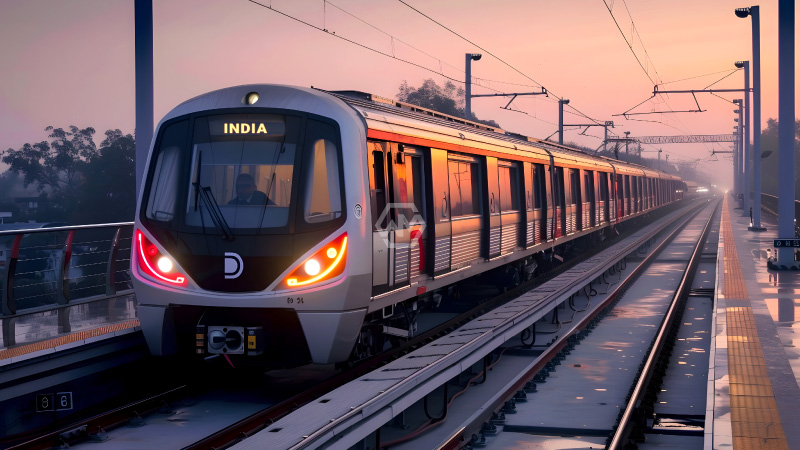- India’s metro network becomes the world’s third-largest, covering 1,000 km.
- Daily ridership surged from 28 lakh to over 1 crore in a decade.
- PM Modi inaugurated the Namo Bharat Corridor and new Delhi Metro sections.
India’s metro network has reached an extraordinary milestone, expanding to 1,000 kilometers and becoming the third-largest in the world. From its humble beginnings in 2002 with the Delhi Metro, the network has transformed urban transport across the nation.
With sustained efforts under Prime Minister Narendra Modi’s leadership since 2014, the number of cities served has increased nearly fivefold, and daily ridership has grown exponentially.
Revolutionizing Urban Transit: India’s Metro Expansion
The inauguration of key infrastructure projects, such as the Delhi-Ghaziabad-Meerut Namo Bharat Corridor and Delhi Metro Phase-IV expansions, marks a significant step forward. These developments are not just about transportation—they promise to enhance regional connectivity, reduce congestion, and uplift the quality of urban living, making India a global leader in sustainable urban transit.
The recent inauguration of the Namo Bharat Corridor introduces high-speed connectivity between Delhi and Meerut. With a reduced travel time and a focus on passenger comfort, this corridor redefines urban commuting for regions surrounding the national capital.
The Delhi Metro Phase-IV developments, including the Janakpuri-Krishna Park and Rithala-Kundli corridors, are expected to serve West Delhi and areas of Haryana. These projects cater to burgeoning urban demands, addressing challenges like pollution and traffic congestion while stimulating economic growth in adjacent areas.
As India continues its metro expansion, the network stands as a symbol of innovation and progress, blending technology with inclusivity to meet the needs of its ever-growing urban population. This massive transformation is a blueprint for modern transit systems worldwide.
India’s metro network is not just about numbers but reflects a paradigm shift in how urban mobility is perceived and delivered. This milestone is a testament to India’s commitment to modernization and sustainable growth.
“Cities have the capability of providing something for everybody, only because, and only when, they are created by everybody.” – Jane Jacobs



